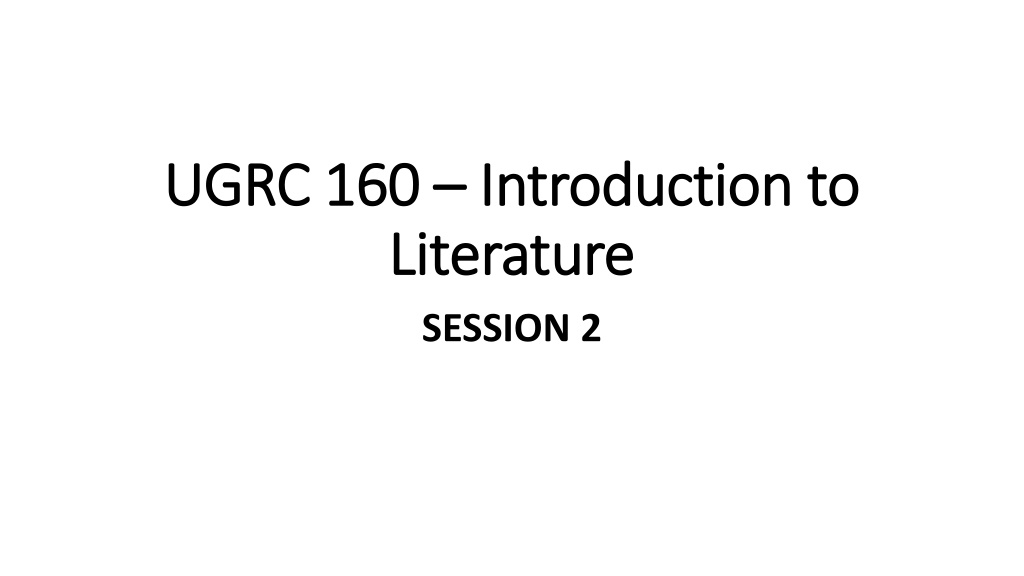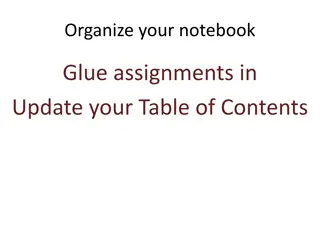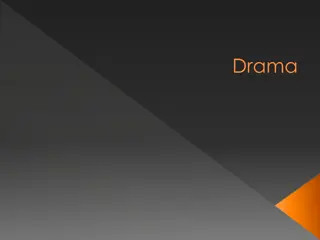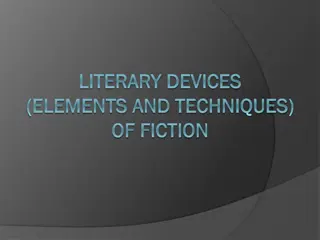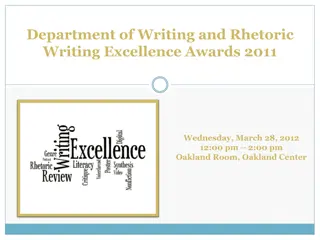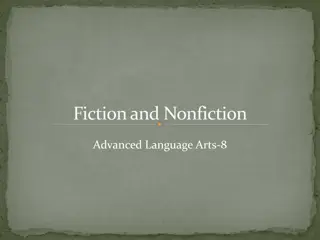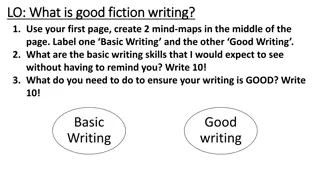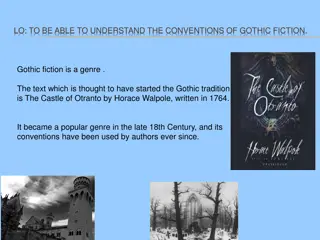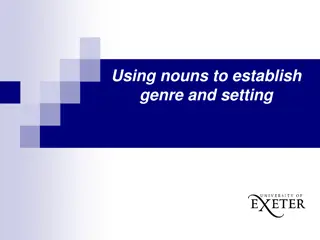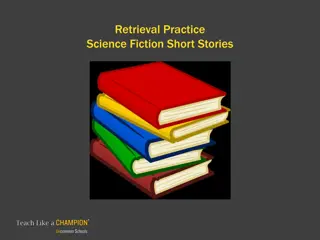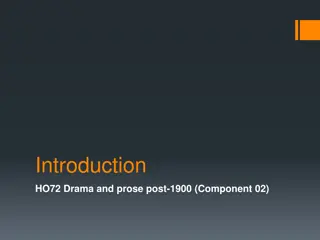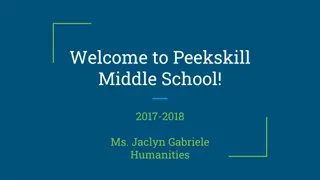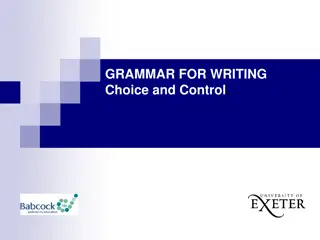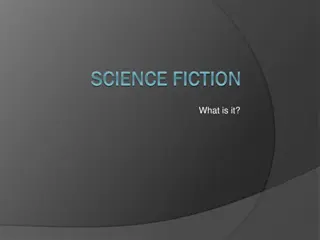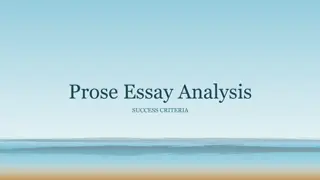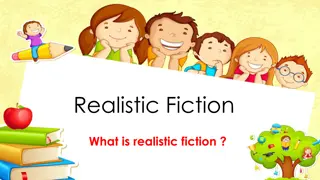Understanding Elements of Fiction in Prose Writing
This session delves into the essential elements of fiction in prose writing, covering plot development, characterization, setting, and more. Students will learn to analyze and interpret these elements in stories, with a focus on applying their understanding to a specific short story. Through detailed explanations and visual aids, the session aims to equip learners with the necessary skills to engage with prose narratives effectively.
Download Presentation

Please find below an Image/Link to download the presentation.
The content on the website is provided AS IS for your information and personal use only. It may not be sold, licensed, or shared on other websites without obtaining consent from the author. Download presentation by click this link. If you encounter any issues during the download, it is possible that the publisher has removed the file from their server.
E N D
Presentation Transcript
UGRC 160 UGRC 160 Introduction to Introduction to Literature Literature SESSION 2
Introduction to Prose (Short Introduction to Prose (Short- -Fiction) Fiction) Part 1 Part 1
Session Objectives Session Objectives At the end of the session, the student will Understand what Prose writing or Prose Narrative is. Be able to explain how distinct Prose Writing is from the other genres. Be able to identify, explain and interpret each element in the discussion of Prose Narrative. Be able to apply his/her understanding of the elements of Prose in discussing Pearl Rowe s short story Cookies At Midnight. (Particular focus on Plot, Character, Setting and Point of View)
Elements of Fiction/Prose Plot Character Setting Point of View Theme Style
PLOT PLOT The plot usually refers to the sequence of events and happenings that make up a story. There is usually a pattern, unintended or intentional, that threads the plot together. The sequence/order/patterning of events in a story (how the story unfolds) Does this mean every story starts AT THE BEGINNING and ends at the END?
CLIMAX DRAMATIC STRUCTURE DEVELOPED BY GUSTAVE FREYTAG RISING ACTION FALLING ACTION EXPOSITION DENOUEMENT
Character/Characterization Character/Characterization Characterization in literature refers to a step-by-step process wherein a character of a story is brought to notice and then detailed upon in front of the reader. Characterization is a sort of initiation wherein the reader is introduced to the character.
A character is imbued with thoughts, roles or attitudes that enable readers to form a perception about the character. The development of characters is often crucial to the unravelling of the plot.
Setting Setting In literature, the word setting is used to identify and establish the time, place and mood of the events of the story. It basically helps in establishing where and when and under what circumstances the story is taking place
An automobile accident occurs . Two drivers are involved. Witnesses include four sidewalk spectators, a policeman, a man with a video-camera who happened to be shooting the scene, and a pilot of a helicopter that was flying overhead. Here we have nine different points of view, and most likely, nine different descriptions of the accident. 1. Whose account of the accident could/would be considered as authentic? 2. Could we have a purely Objective interpretation of how the accident happened?
In Short Fiction, who tells the story and how it is told are critical issues for an author to decide. The tone and feel of the story, and even its meaning, can change radically depending on who is telling the story. Someone is always between the reader and the action of the story. That someone is telling the story from his or her own point of view. This angle of vision, the point of view from which the people, events, and details are viewed, is important to consider when reading the story. This idea of WHO is telling the story in a narrative leads us to a discussion of POINT OF VIEW.
Point of View Point of View In literature, the point of view is a literary device that depicts the manner in which a story is narrated/ depicted and who it is that tells the story. Simply put, the point of view determines the angle and perception of the story unfolding, and thus influences the tone in which the story takes place.
The point of view is instrumental in manipulating the readers understanding of the narrative. In a way, the point of view can allow or withhold the reader access into the greater reaches of the story. 1. First person narration 2. Second Person narration 3. Third Person (Omniscient narration)
COOKIES AT MIDNIGHT
COOKIES AT MIDNIGHT 1. Who wrote the Story? 2. What is the story about? 3. What happens in the story? 4. Who are the characters in the story? 5. Is there a main character in this story? Who is it? Why? 6. Does the story start at the beginning and end at the end? 7. What would you say is the Climax of the story? (Which event in the plot structure) 8. Why does the writer choose a child narrator? Do you think there is any particular reason for this?
